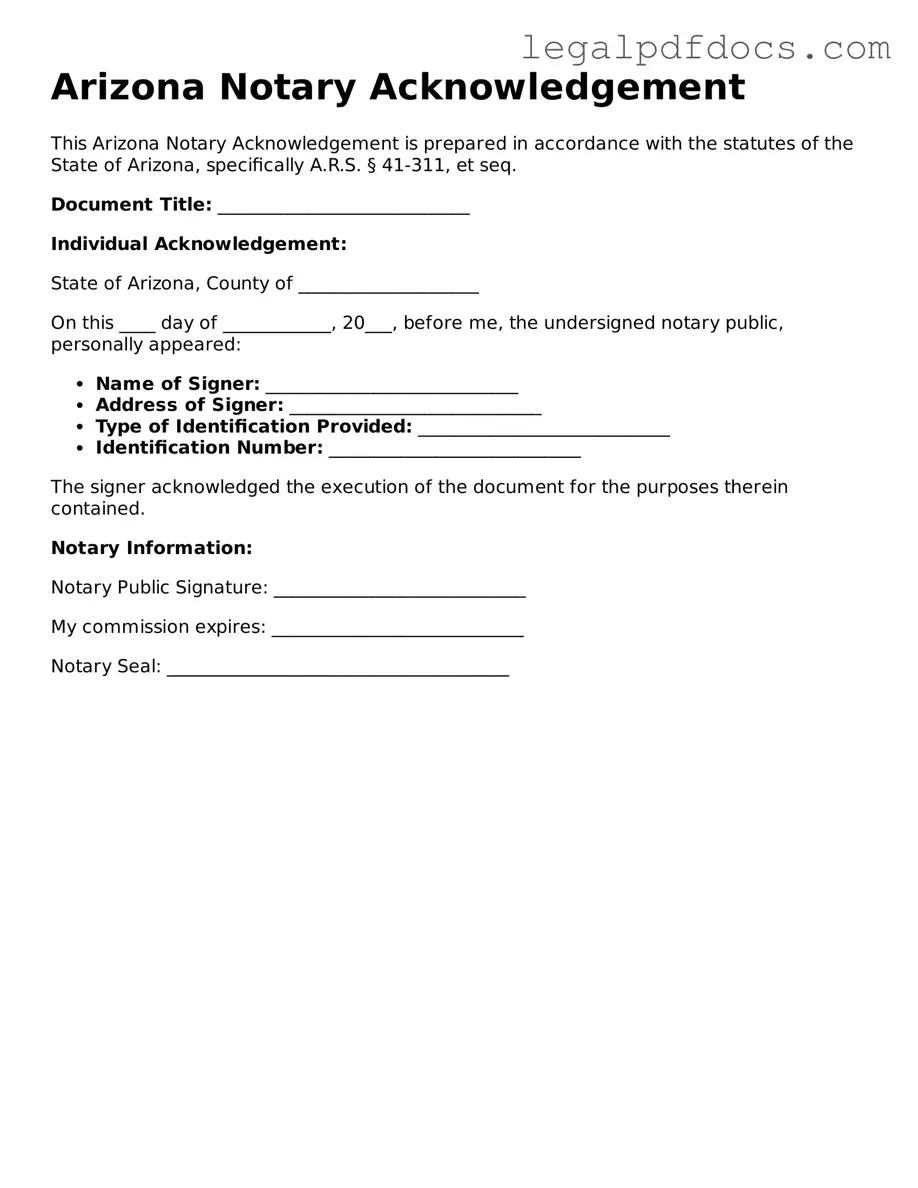In the state of Arizona, the Notary Acknowledgment form serves as a vital tool in the realm of legal documentation, ensuring that signatures on various documents are authentic and that the signers are who they claim to be. This form is typically used when individuals need to verify their identity in front of a notary public, adding a layer of security to important transactions such as property transfers, wills, and contracts. The acknowledgment process involves the notary confirming the signer’s identity through valid identification and witnessing the signature, which ultimately enhances the credibility of the document. Additionally, the form includes specific details such as the name of the signer, the date of the acknowledgment, and the notary's official seal, all of which contribute to the document's validity. Understanding the nuances of this form not only empowers individuals to navigate legal requirements with confidence but also underscores the importance of having trustworthy witnesses in any legal matter.
